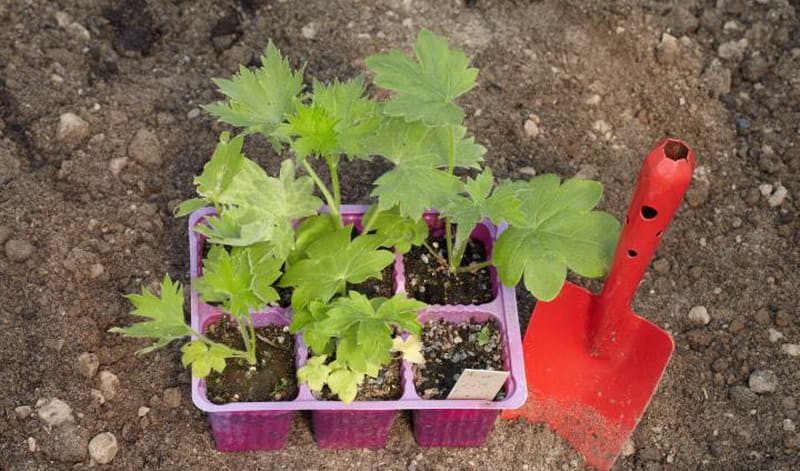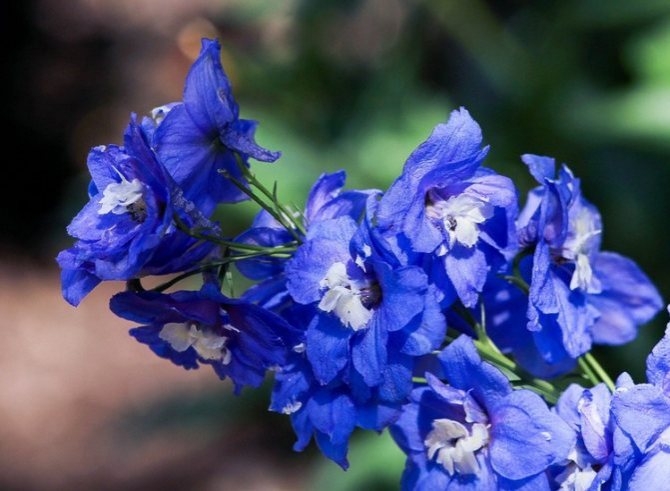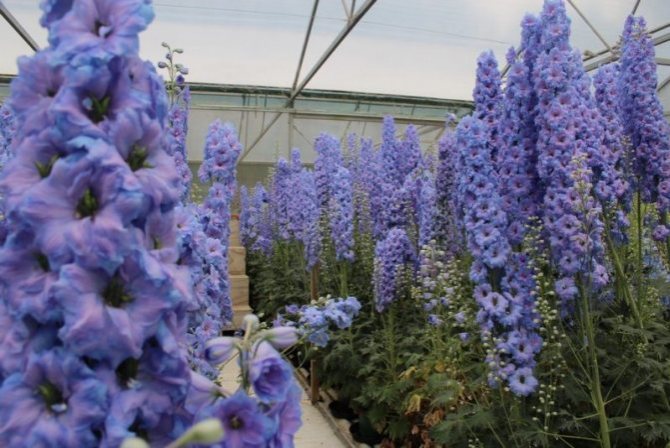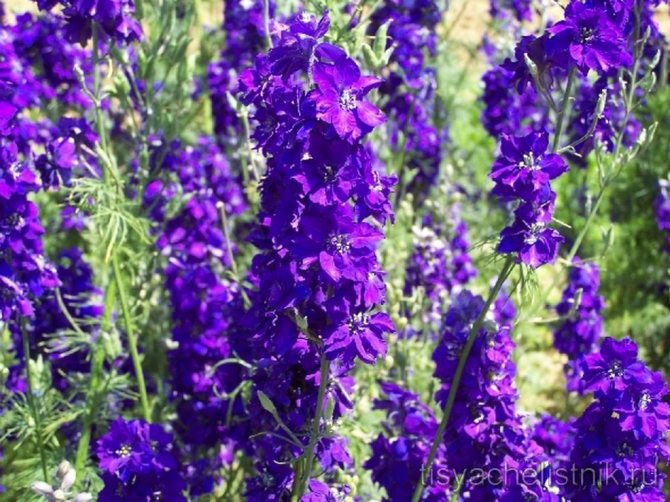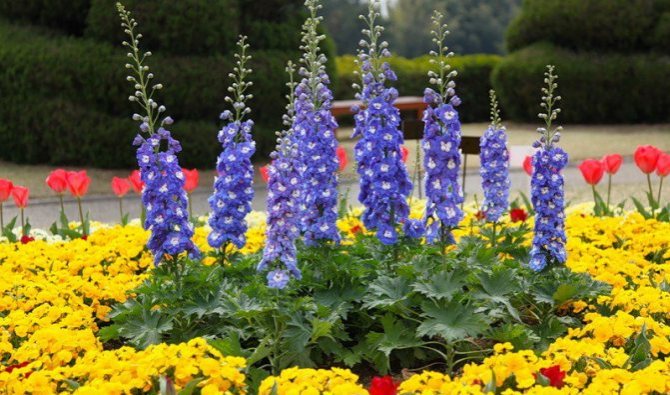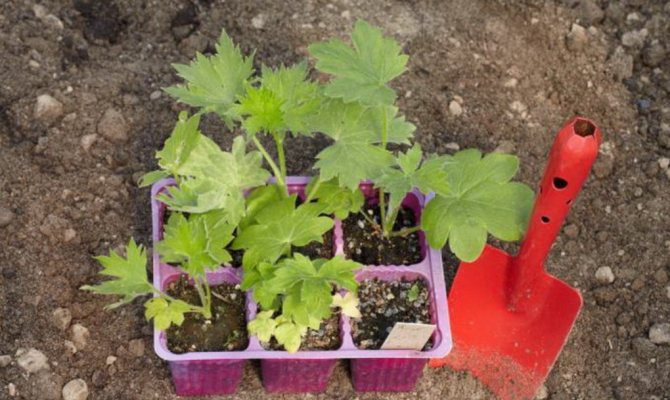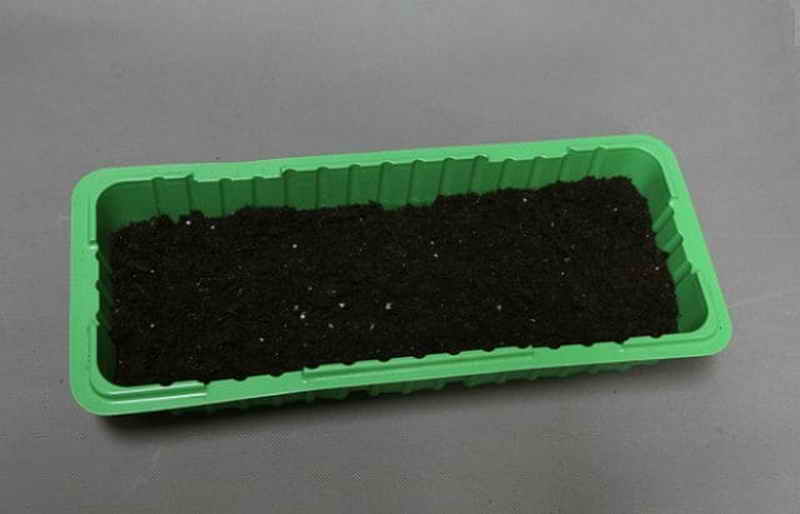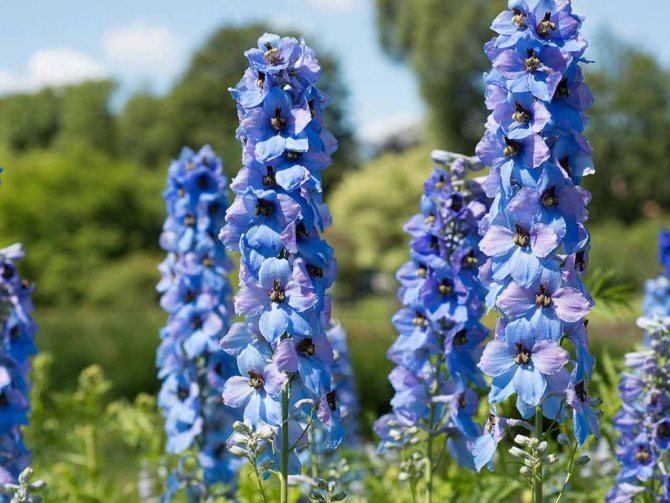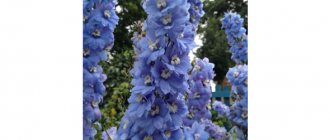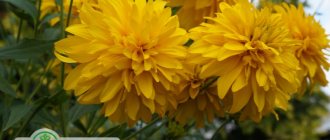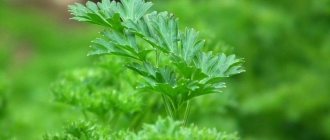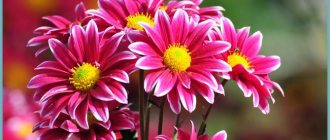There is an opinion that this "sea" name is due to the fact that the unblown flower resembles the head of a dolphin. But there is also another version - the name is associated with the Greek city of Delphi, in which, according to legend, these wonderful flowers grew in immoderate numbers. But whatever the roots of this unusual name, it is difficult to deny that these flowers are amazing in their beauty, original and able to please even the most sophisticated florist. But how to grow an annual and perennial delphinium from seeds at home? Let's figure it out.
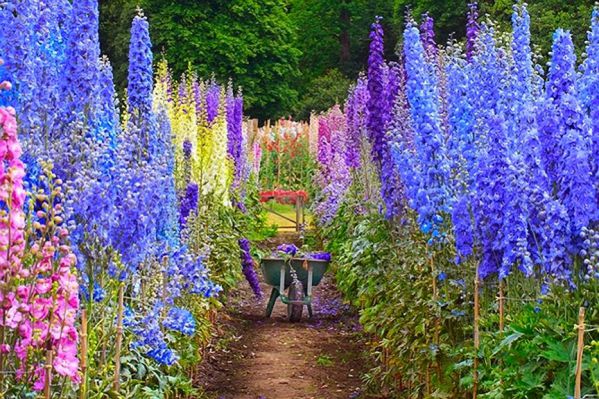
General information about the delphinium
Delphinium is not the only name for a beautiful flower, yet he is called spur, larkspur... At the same time, larkspur is the official name of a flower.
The plant belongs to the buttercup family. At the moment, there are more than four hundred different types of flowers. The plant can be either annual or perennial.


The colors of the plant will charm every person who looks at the flower. This is largely due to the shape and color of the plant. There are flowers of lilac, white, blue, blue, pink, while the shades have a unique tenderness and grace.


There are three popular ways of reproduction of larkspur - cuttings, dividing the bush, seeds... But with the first two methods, the plant can be damaged, therefore, the option of growing delphinium seedlings at home from seeds is popular.


Perennial species
Delphinium - care and cultivation from seeds
Perennial species include:
- Large-flowered delphinium: its height reaches 80 cm, flowers are wide, have an average size. They are collected in racemose plants. The most popular variety is butterfly.
- Delphinium Pacific Black Knight: grows up to 200 cm. Flowers are semi-double with a diameter of 5-6 cm. Their color is dark purple.
- Delphinium Black Knight: perennial, tall. It is a new variety. Terry and semi-double buds. Their color can be black and dark blue.
- Delphinium Galahad: height up to 120 cm, semi-double white flowers. The variety is also new;
- Magic: height 100 cm, white-pink flowers.
- The Scottish group has very beautiful double buds. They come in a variety of shades. There are approximately 60 petals. They can grow up to one and a half meters.
Important! The stores offer sets of different varieties.
When to plant delphinium seedlings, in what month
When is it better to sow a crop at home? The optimal time for sowing delphinium seeds is approximately end of February-beginning of March... But in different regions, the landing time varies, since there are different weather and climatic conditions:
- in the middle lane (including the suburbs), it is better to sow in mid-March;
- in Siberia, in the Urals, in the Leningrad region at the end of March;
- but in the South, it is optimal to sow seeds at the end of February.
It will also help to choose the right timing for planting a delphinium for seedlings Lunar calendar 2020:
- Suitable days for an annual: in February -1, 2, 3, 4, 5, 6, 7, 8, 10, 11, 12, 13, 14, 15, 16, 17, 18, 19, 20, 25, 26, 27, 28, 29 number;
- in March - 2, 3, 4, 5, 6, 7, 8, 10, 11, 12, 13, 14, 29, 30, 31;
- in April - 1, 2, 5, 6, 7, 9, 18, 19, 20, 24, 25.
- in February -1, 2, 3, 4, 5, 6, 7, 8, 10, 11, 12, 13, 14, 15, 16, 17, 18, 19, 20, 25, 26, 27, 28, 29 number;
- in February - 9, 21, 22, 23;
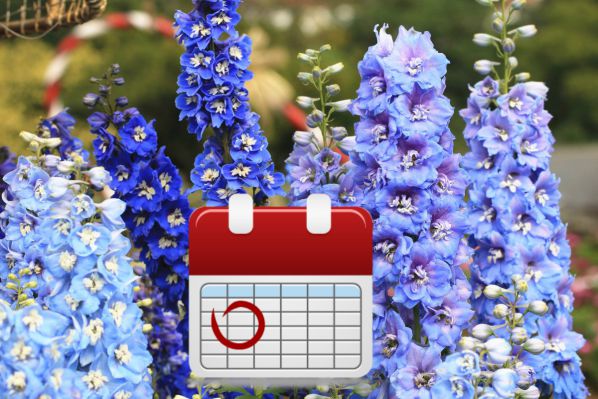

Step-by-step instructions for planting delphinium seeds for seedlings
Let's take a look at the basic steps that need to be taken to carry out the procedure correctly.
Seed selection
The main requirement for seed is high quality. Indeed, the quality of seedlings depends on the seeds, and the beauty of future flowers and survival in the open field depends on the latter.
It is best to buy seeds from a reliable, trusted store (if you come across a selling point for the first time, be sure to read reviews about it).
Or you can collect delphinium seeds yourself... But this option is possible if you already have this plant growing. Spur seeds are harvested in the fall. To determine the maturity of the seeds, you need to pay attention to the seed box - it must dry out and acquire a brown tint.
Advice! Seed collection should be carried out only in dry weather, humidity and precipitation are not allowed.
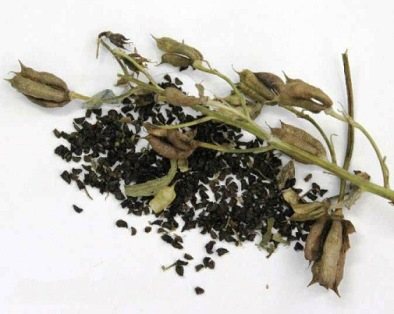

The maximum storage period for seed is 11 months.... With longer storage, the material will lose its similarity and you will simply waste time on unsuccessful sowing.
Important! The optimal conditions for storing delphinium seeds are at low temperatures, preferably in the refrigerator, but they must first be wrapped in a paper bag.
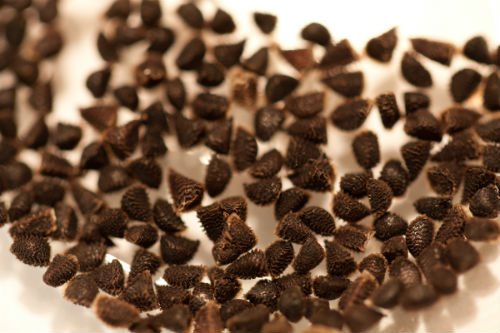

The choice of planting capacity
When choosing a container, it is recommended to keep it in moderation and choose containers of medium, normal size. Too large containers can provoke soil acidification, and it is dangerous for this plant as it provokes diseases, and the seedlings of the culture are prone to root rot and black leg.
For planting delphinium seeds for seedlings optimal use of the following medium-sized containers:
- wide wooden or plastic boxes;
- plastic cassettes;
- peat cups;
- plastic cups;
- peat tablets.
The planting containers must have drainage holes to remove excess moisture. Except for peat pills and pots, before direct use, it is imperative to wash and disinfect containers (rinse them in a pink potassium permanganate solution).
Among the listed options, I especially want to highlight peat tablets... The plant is not very welcoming to transplanting, and planting of a seedling in open ground can be done directly in a peat tablet, which minimizes stress.
Soil preparation
Soil for larkspur can be bought at a specialized store or prepared at home with your own hands. If you decide to buy land, then you can purchase a universal seedling mixture (the main thing is that it is light) or special soil for succulents, the spur will be very comfortable in it.
But if you want to prepare the potting mix yourself, then you need to know certain rules. For growing delphinium seedlings neoit is necessary to choose a soil that has the necessary characteristics:
- the soil should have neutral acidity;
- have good air and moisture permeability;
- the ground should be light.
To prepare the seedling soil, you need to mix the following ingredients:
- coarse sand (0.5 parts);
- sod land (1 part);
- humus (part 1);
- peat (1).
You need to mix all the ingredients well and sift. After that, it is recommended to add perlite (the ratio is one glass to 10 liters of soil mixture).
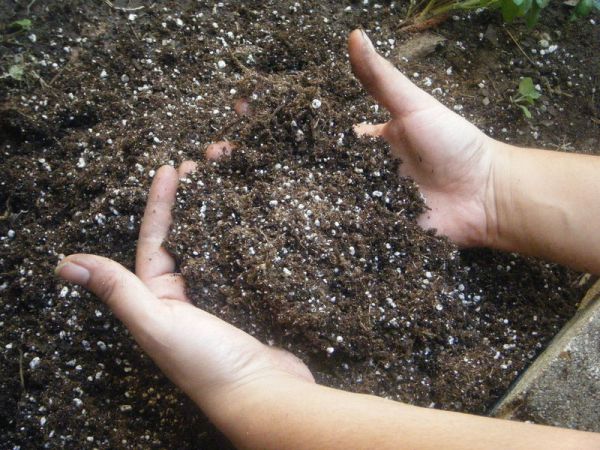

Important! The soil for sowing delphinium must be disinfected. For these purposes, you can spill it with a pink solution of potassium permanganate or Fitosporin solution (dilute 15 ml of the drug in 10 liters of water).
Seed preparation before planting
Processing larkspur seeds before sowing helps them awaken, and also removes harmful pathogens from their surface. As the main preparatory measure, disinfection and soaking are carried out:
- Remove seeds from refrigerator and place in a cloth bag or wrap in cheesecloth.
- Prepare Fitosporin solution and soak the seeds according to the instructions.
- After the time has elapsed, remove the seeds and rinse under running water.
- Then make a solution of the Epin drug according to the instructions and immerse the seed for 2-4 hours, such a manipulation will stimulate the growth of future seedlings.
- Spread the seeds on dry gauze and dry slightly.


Direct sowing
After you have chosen the planting container, prepared the soil, prepared the seeds, you need to start sowing.
The following step-by-step instructions will help to correctly plant delphinium seeds for seedlings:
- The first step is to fill the planting containers with soil. There should be a gap of 1 centimeter between the soil and the edge of the container.
- Compact the soil lightly by hand.
- Spread the seeds over the surface of the soil.
- Now you should transfer the seeds to the ground, for convenience you can use a toothpick or tweezers, but it's easier to do this with your fingers. The distance between the seeds in the common box is about 2 centimeters. You should put 1-2 seeds in individual containers.
- Then you need to carefully sprinkle the seed with a small amount of soil. The soil layer should be thin (about 2 mm).
- Spray with a spray bottle.
- After planting, crops must be stratified. To do this, cover the container with a lid, wrap it in a plastic bag and transfer it to the refrigerator.
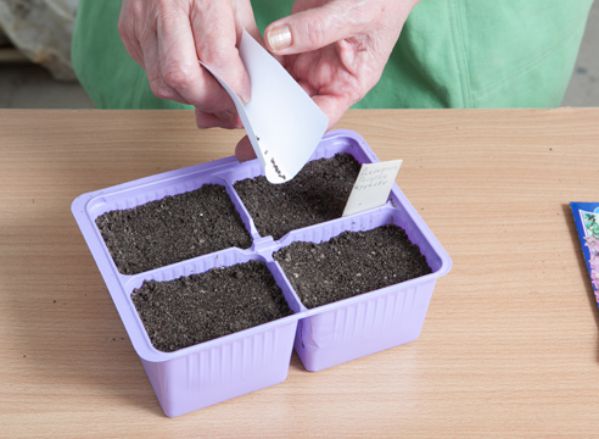

Video: how to plant delphinium seeds.
Frequently asked questions
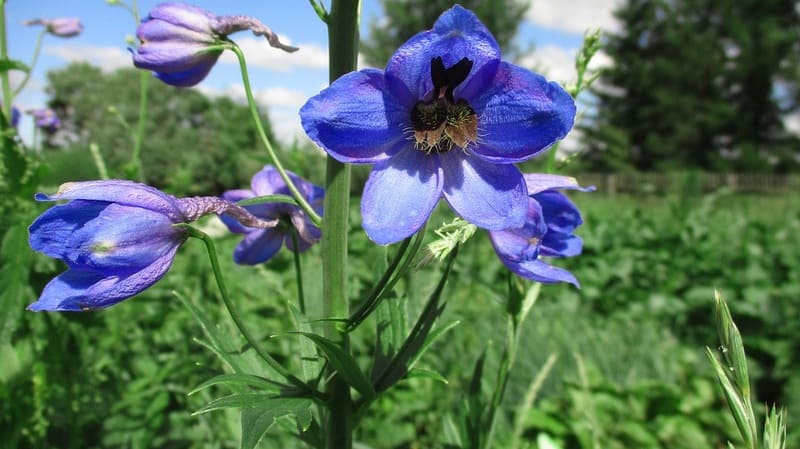

What soil to buy for growing seedlings?
For planting a delphinium, both self-prepared soil and purchased in a store are suitable. A universal soil for flower seedlings, which is based on peat, is suitable. Also suitable for succulent plants and cacti.
How can the seeds be stimulated for further growth?
A change in temperature contributes to an increase in the germination of delphinium seeds. For the first 3-4 days, the container with seeds should be kept indoors at a temperature of 10-15 C, then for 2 weeks to provide a minus temperature by placing it in the refrigerator. After that, the containers should be moved back to the room.
Why don't the seeds germinate?
When sowing a delphinium, it is important to choose the right seeds. For a plant to grow well, you need fresh or properly stored seeds.
At the beginning of the 19th century, experiments were carried out in the United States that showed that seeds stored at low temperatures in a sealed package retained similarity after 16 years. If you store the seeds at room temperature. In paper packaging, they will lose their germination after 11 months.
Why are seeds soaked?
Seed soaking is done for several reasons:
- To check their quality. You can purchase expired seeds that have lost their germination. If the seeds hatch after soaking, then they are in order and can be planted in the soil.
- To improve germination. If the seeds are pre-soaked, they will sprout faster.
- To prevent disease. Soaking is used to kill pathogens that can kill seedlings.
How to harden delphinium seedlings?
Hardening will help to strengthen the young plant and prepare it for planting in the ground. You need to start hardening 10 days before the planned disembarkation on the street. The first few days, the plants are gradually accustomed to fresh air, briefly opening the window. The first days the sprouts should be protected from direct sunlight. Then you can gradually accustom the seedlings to the sun. Every day, the time spent in the sun can be increased by 1-2 hours. Immediately before planting, it is recommended to leave the seedlings in the fresh air overnight.
What to do if delphinium seedlings do not grow?
When growing a delphinium, water balance is important. It is necessary to ensure that the soil does not dry out. At the same time, excess moisture can adversely affect the plant.
Delphinium seedling care
For the successful cultivation of healthy and strong delphinium seedlings at home, it is necessary to carry out full and regular care after planting the seeds. In this case, the conditions before and after the emergence of seedlings are different. Let's consider in more detail.
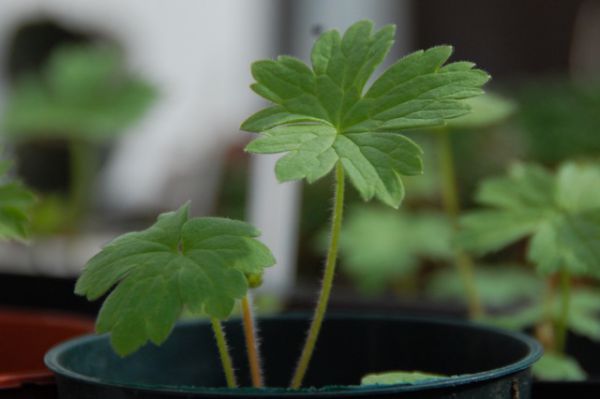

Care after sowing and before germination
After sowing delphinium seeds, the container should be in the refrigerator for 10-14 days... Such conditions will help to get seedlings faster, and stratification also strengthens the immunity of seedlings. Regularly check and moisten (as necessary, when the soil dries out) crops in the refrigerator, and as soon as shoots appear (after about 10-14 days), you need to remove the polyethylene and the cover, and transfer the seedlings to a bright room where the temperature is maintained at 15-18 degrees of heat.
Post-emergence care
In order to properly care for delphinium seedlings after germination, the following conditions should be provided:
- Temperature regime... Monitor the room temperature carefully, it should be not lower than + 18 ° C and not higher than + 20 ° C... A decrease or increase in t will negatively affect the plants or even cause them to die.
- Lighting... Seedlings should be in a well-lit place, south or southwest windows are ideal. Daylight hours should be 12-14 hours, therefore, if necessary, supplement the seedlings with a phytolamp or at least with LED lamps.
- Watering... Pay close attention to the moisture content of the soil, it should not dry out. At the first signs of drying out of the top layer of the soil, water it moderately at the root, this way you can water it with a syringe.
- Loosening... Lightly loosen the soil surface regularly.
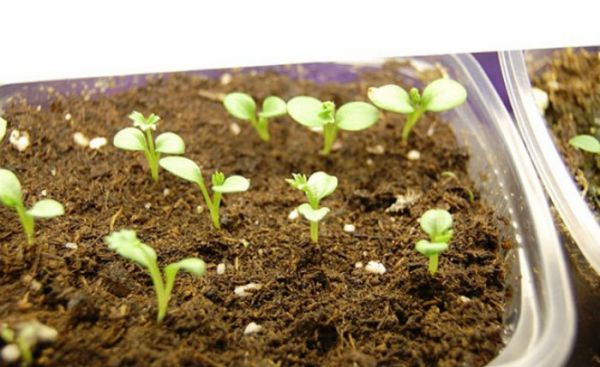

Diseases and pests
Proper care and preventive measures will protect the delphinium from pests. It is necessary to remove plant debris in a timely manner, to prevent thickening of the plantings.
The plant is loved by slugs and snails. To protect the spur from uninvited guests, you need to scatter broken eggshells or basalt flour under the bush.
The blue-green larkspur aphid and chrysanthemum nematode pose a threat to perennials.
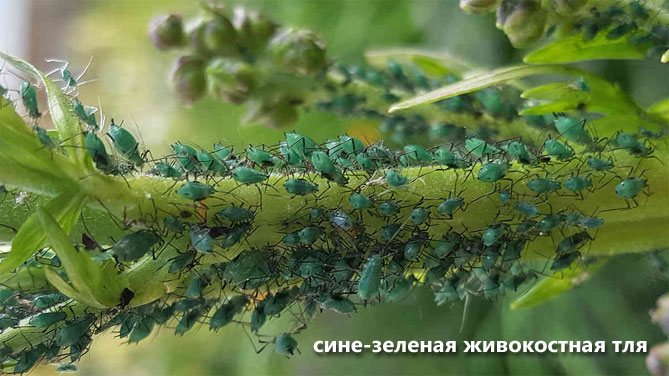

Among the diseases affecting delphinium, there are fungal infections (powdery mildew) and bacterial (black leaf spot).
Picking delphinium seedlings
The recommended timing for picking delphinium seedlings comes at the moment when the seedlings appear the first 2-3 true leaves... It is necessary to dive into separate containers, for example, plastic cups, cassettes. The picking container should have a volume of 0.3-0.5 liters.
And the soil can be used the same as for the initial planting of seeds, but it is recommended to add a complex mineral fertilizer to it, including potassium, nitrogen, phosphorus (fertilizer is applied in the ratio - one tablespoon per 5 liters of soil).
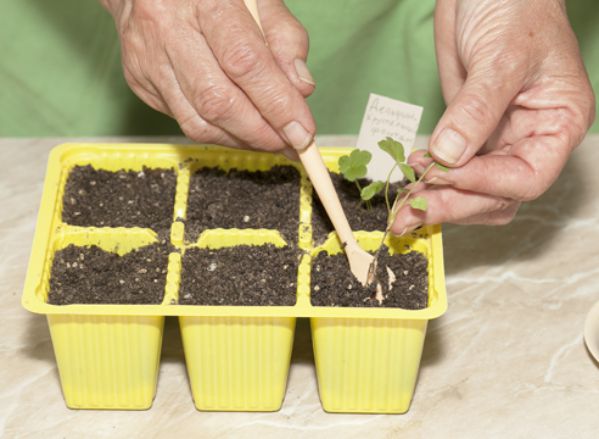

You need to dive delphinium seedlings according to the following scheme:
- Water the container one hour before the procedure to facilitate the removal of the seedling.
- Pour soil into the planting container and make a depression corresponding to the size of the seedling's earthen coma.
- Water the soil in a new container.
- Now you need to remove the seedlings along with a clod of earth, if the seeds were planted in a common box, then carefully separate the seedling with a plastic fork or spoon, without destroying the clod of earth.
- Transfer the seedlings to a new container, sprinkle with earth, bury the plants in the ground to the point of growth of real leaves.
- Tamp down the soil carefully.
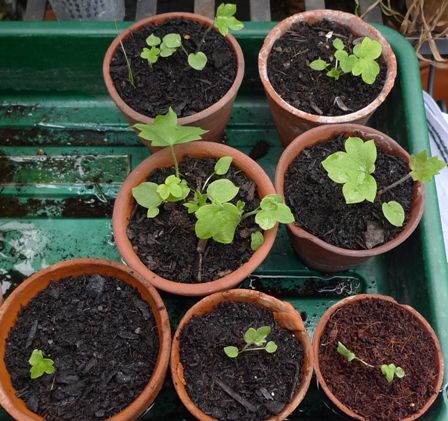

Note! You need to take care of the spur seedlings after the pick in the same way as before the procedure. But after diving, the first time you need to water the plants only after a week.
Video: picking delphinium seedlings.
Secrets of Successful Sowing
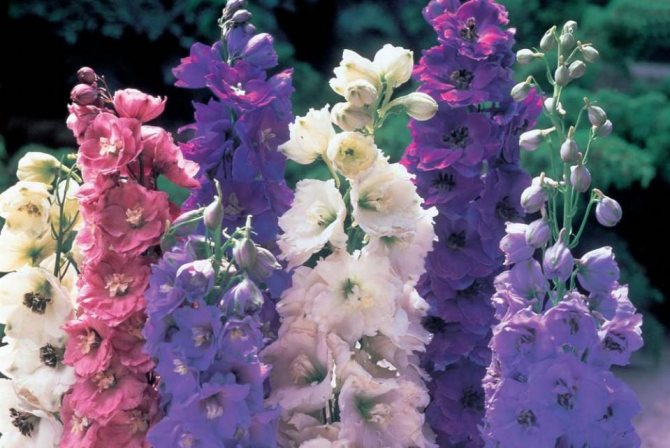

How to grow delphiniums
The misconception about the impossibility of seed cultivation of a delphinium appeared due to the fact that not every florist knows about the features of this plant. And if you buy seeds somewhere on the market, and not in a special store, then the risk of poor germination increases significantly, because the conditions for storing planting material are a guarantee of good development. For example, at room temperature, the properties of seedlings are preserved for a maximum of 11 months, but if the temperature is below zero, then this period can increase to 15 years.
In a word, when buying seeds at dubious points of sale, do not forget that even if all the growing conditions are met, the result can still be very bad. For this reason, it is best to seek the services of reliable suppliers or breeders.
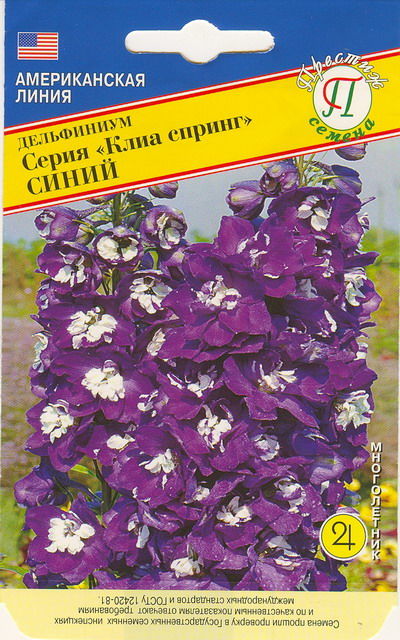

Delphinium Clea Spring Blue (Prestige)


Delphinium Royal Spire
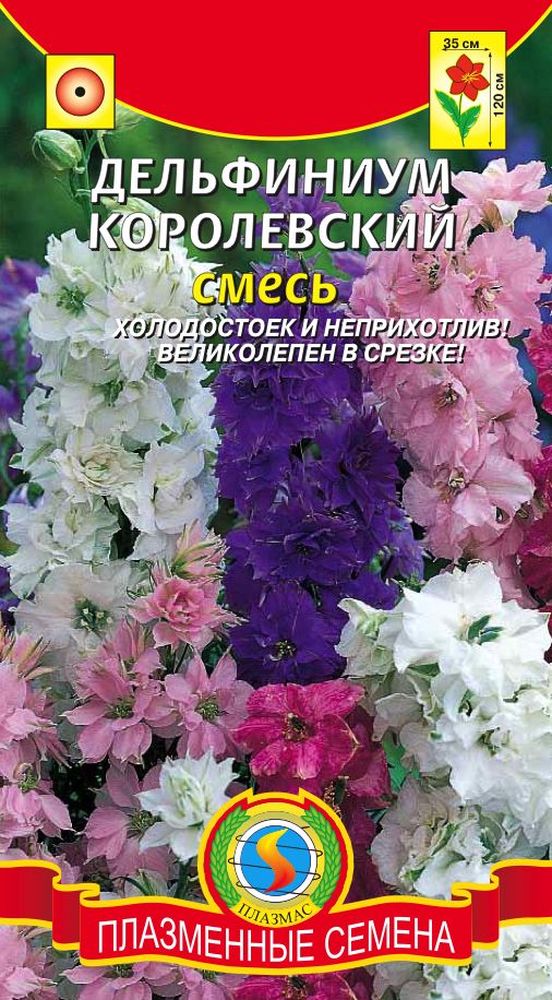

Delphinium Royal Delphinium Annual Baccarat
Note! Gardeners whose plot is already decorated with delphiniums can collect seeds with their own hands. It is preferable to collect in sunny weather.
The collected fruits must be ripe (they are often brown). The highest quality material in plants that grew and developed fully. You need to store the seeds in an airtight glass container, preferably in a cool place (the latter will be a refrigerator, veranda, balcony, etc.). Now let's look directly at the sowing procedure and further care.
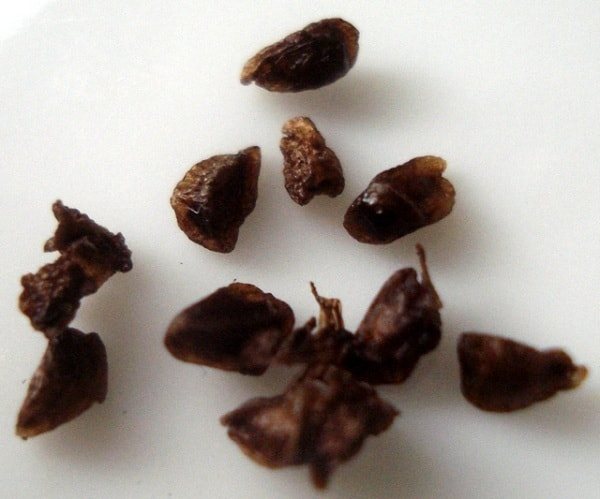

Delphinium seeds
Transplanting delphinium seedlings into open ground
Having waited for the moment when the seedlings grow, the florist makes a long-awaited transplant into the open ground. But in order for the garden event to go well and the plants take root, it is necessary to observe the planting dates, prepare the seedlings, choose the right place and transplant according to the correct scheme.
Disembarkation dates
Delphinium is transplanted into open ground at the moment when it has 6-8 true leaves... It is worth replanting only if you are sure that the frost is completely gone and will never return.
The timing of planting larkspur seedlings in different regions of your country varies:
- in the Middle zone (including the Moscow region) - the second half of May;
- in the South - end of April;
- in Siberia and the Urals, it is better to replant in late May-early June.
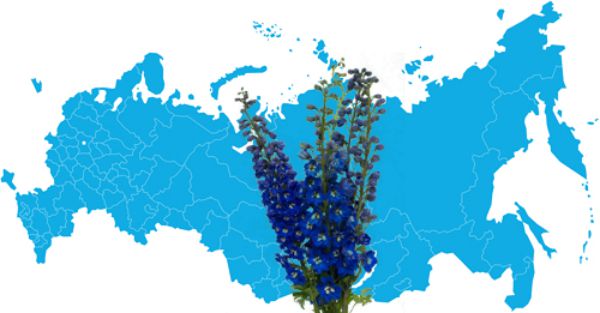

Preparing seedlings for planting (feeding and hardening)
Before planting in open ground, the delphinium seedlings should be prepared. Preparation includes feeding and hardening.
Top dressing Larkspur seedlings can be produced with a complex fertilizer 2 weeks before transplanting. For example, you can use the preparations Agricola, Gumistar, Solution, Fertika Lux. Top dressing must be root and must be combined with watering.
It is also important to carry outincandescencewhich will strengthen the seedlings and help the young spur to adapt to new outdoor conditions. You need to start hardening the plants about ten days before planting in open ground. For the first 3-4 days, open the window for fresh air. Then for 3-4 days you need to leave the seedlings for four hours on a glassed-in balcony or loggia. Leave the plants in this area overnight before planting.
Site selection and preparation
It is better to choose a place for planting delphinium seedlings based on the following recommendations:
- it is comfortable for a plant to grow in open areas that are well lit by the sun;
- at the same time, the place must be reliably protected from strong and cold winds (for example, next to a wall of a building or a fence);
- you should not choose lowlands for planting, in which moisture will stagnate;
- it is advisable to contrive and choose a sunny area where the flowers could be in the shade for a couple of hours a day;
- the flower likes neutral or slightly acidic, fertile soils, the best option is loose loam, fertilized with humus or compost.
In the fall, before planting delphinium seedlings in open ground, apply fertilizer to the soil. To do this, dig up the garden bed, adding humus or compost - five kilograms per square meter.
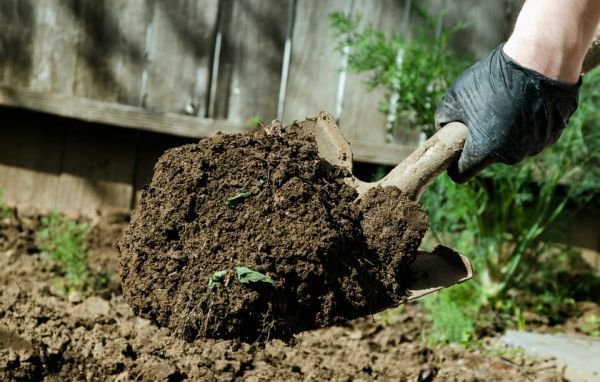

Preparing perennials for a dormant period
By the end of the season, the one-year-old shoots will wither and will need to be removed from the flower bed. A perennial flower is renewed in spring from dormant rhizome buds. The underground organ withstands harsh winters well, subject to high snow cover. In autumn, the stems are cut at a height of 5 cm, and the holes must be covered with clay. Such a measure will protect the rhizome from decay as a result of moisture penetration through the stumps of the stalks. It is advisable to sprinkle the flower bed with deciduous litter to a height of 20 cm by the onset of frost, and sketch spruce branches on top. After the snow melts, be sure to remove the protection.

